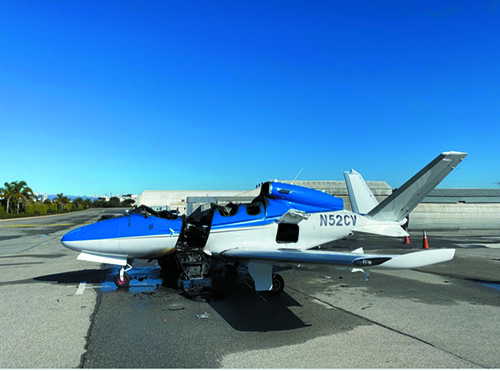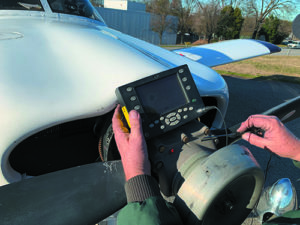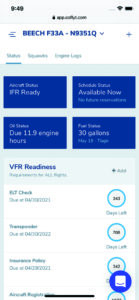
We got a call awhile back from the seller of a light twin who was in a panic when the aircraft was snagged in a prepurchase inspection because an old AD wasn’t signed off. The lack of AD compliance rightfully raised some red flags about the overall upkeep of the airplane, and the buyer was ready to walk away from it.
While the seller was quick to blame his maintenance shop for either forgetting the logbook sign-off or missing the AD compliance altogether (it required substantial teardown to determine if the AD was complied with), we reminded him that ultimately it is the owner’s responsibility to look after AD compliance, and not the mechanic’s. This topic is worth a look.
ADs FOR DUMMIES
Even as experienced maintenance folk, we struggle with FAA verbiage, and AD language in particular. A review is in order. You should consider airworthiness directives (published in the Federal registry) an extension of enforceable FAA regulations. The FAA spells it all out in its Advisory Circular 39-7D, and pursuant to Part 39, reinforces that it has the authority at any time to reinspect and re-examine a civil aircraft, aircraft engine, propeller or appliance that it has already approved.
We all know that the FAA issues ADs when a potentially unsafe condition is found to exist in not only a particular aircraft model (or component), but also in the type design of others. And, the dreaded ADs are used by the FAA to notify aircraft owners and operators of this unsafe condition, and to require their correction within a time frame considered to be within the bounds of safety, yet still reasonably achievable by owners of affected aircraft. In other words, don’t waste any time getting the condition fixed, but you don’t have to do it before you fly the aircraft again. On the other hand, safety of flight conditions are urgent and the FAA has a plan for dealing with them with emergency ADs.
These can ground an entire fleet, as emergency ADs are a special class of AD that provide for an even more expeditious resolution of an unsafe condition. It goes without saying that it’s important for you as the owner/operator to remain aware of any AD status applicable to the aircraft. Legally, you and your estate could be on the hook if the aircraft crashes and you were found negligent by not complying with an outstanding AD. It’s also the owner’s responsibility to make sure any lessee is aware of an AD.
Several years ago the FAA began notifying registered owners of emergency ADs by first-class mail, but we think the communication effort is also the responsibility of the manufacturer. The better ones are on it immediately. Electronic versions of ADs are available from the FAA’s website (www.faa.gov) and you can search by manufacturer, model or AD number.
AD content usually includes a description of the unsafe condition, the product to which the AD applies and any reference to service bulletins. It lists the required corrective action or operating limitations (or both), the AD’s effective date, a compliance time frame, where to go for more information and information on alternative methods of compliance with the requirements of the AD.
If you’ve ever tried to figure out the coding of a particular AD you might have given up deciphering the three-part number designator. For AD 2005-20-25, for example (an avionics electrical bus AD against the Cessna 425), the first part is the calendar year of issuance, the second part is the biweekly period of the year when the number is assigned and the third part is issued sequentially within each biweekly period.
The confusing language that tags along with ADs is notice of proposed rulemaking, or NPRM, followed by final ruling, which is the most common type of AD. An NPRM is issued whenever safety considerations do not require the immediate imposition of action under an AD. With an NPRM, anyone is invited to comment by submitting written concerns to the FAA. After the comment period closes, the final ruling is prepared, taking into account the comments received.
DOES THAT AD APPLY TO MINE?
Generally, type certificate and airworthiness certification data is used to identify the product that’s affected by an AD. Limitations may be placed on applicability by specifying the serial number or number series to which the AD is applicable. When there is no reference to serial numbers, all serial numbers are affected. Still, determining what aircraft the AD is applicable to, and even whether it applies to an experimental homebuilt aircraft (generally, ADs apply to type-certified aircraft) can be tricky, although the latest AC 39-7D does a better job than previous guidance when it comes to calling out experimentals. Moreover, from our experience newer ADs seem better written than older ones and generally the AD will specify if experimentals are included. But keep in mind that many experimentals have type-certified engines and propellers so being on the electronic list of new ADs (while keeping tabs on the AD library) is wise.

In the case of the previously mentioned twin for sale, the AD was found to be complied with, but wasn’t signed off in the maintenance records. Shops are required to keep work orders on file for a specific amount of time and luckily the work was documented. But in the eyes of the FAA—forever a stickler for the right paperwork—without an endorsement, the AD essentially wasn’t complied with. Additionally, the belief that AD compliance is only required at the time of a required inspection (as in during an annual or phase inspection, for example) just isn’t correct. The aircraft can come out of the most thorough annual (or a total refurb for that matter), but if the AD wasn’t signed off, the aircraft is officially unairworthy, at least from a paperwork standpoint.
ALTERNATE COMPLIANCE
The AD specifically states the compliance time, and the aircraft cannot be operated (legally) after that time has expired without an alternate means of compliance, known as an AMOC. That might be an STC modification, as one example. Here’s where it gets sticky, and why it’s best to deal with the AD as soon as possible—not years later when the airplane is in for a prebuy look-over.
By definition, an AMOC is a different way (other than the one specified in the AD) to address the unsafe condition, and is an FAA-approved alternative to address the specific requirements of the AD. It can include a change in the required time to accomplish the AD. An AMOC is handled through an FAA principal inspector, or PI. The PI might weigh in on the AMOC method proposed and then forwards the request to the manager of the FAA office identified in the AD. If there’s no PI (as in the case of a design approval holder), you could send the AMOC request directly to the FAA office. Ultimately, the regional FAA ACO (aircraft certification office) has the final say whether the AMOC provides an acceptable level of safety in addressing the AD. This won’t be an easy process and you should have your paperwork and engineering data in good order.
Regardless of how the AD is complied with, the regs say that an AD has to be dealt with and signed off by a person or agency that’s qualified and certified to do the work prescribed by the AD. For the most basic AD compliance—maybe a simple inspection and verifying a component’s part number—the AD might even say the aircraft’s owner can sign off on it. During annual inspection the A&P/IA will backstop it and verify that you, as the aircraft’s owner, handled the AD properly.
But that might not be the end of it. Some ADs require repetitive or periodic inspection. In order to provide for flexibility, an AD may allow for adjustment of the inspection interval to coincide with other inspections required by Part 91 (during the next annual, for example), or other regulations. The conditions and approval requirements under which adjustments may be allowed are generally stated in the AD. If the AD does not contain such provisions, adjustments are usually not permitted. However, amendment, modification or adjustment of the terms of the AD may be requested by contacting the office that issued the AD or by following the petition procedures in Part 91.
Many ADs indicate the acceptability of one or more alternative methods of compliance. Any AMOC or adjustment of compliance time other than what is listed in the AD must be substantiated and approved by the FAA before it may be used. That may not be easy to pull off. But it’s worth a try, and normally the office or person authorized to approve an alternative method of compliance is where to start, and they are indicated in the AD.

It may seem like a basic chore of responsible aircraft ownership, but keeping track of scheduled maintenance—and keeping on top of AD compliance—may not be as easy as you think. Between oil changes, annual inspections, transponder and pitot/static inspections, ELT battery replacement and even documenting mechanical squawks in a multi-pilot (and multi-airplane) partnership, it can be easy to get behind the record-keeping curve, even forgetting to drag the aircraft to the shop. Worse, you might overlook a critical AD. It happens, but a new smartphone app called Coflyt can help manage the task.
The iOS/Android app’s $14 monthly Solo plan allows you to track the aircraft’s maintenance events, see its VFR/IFR readiness and view/log squawks. The Maintenance Insights feature is intended as an ongoing squawk log that you can share with a mechanic (via email link) or among partners in what it calls the Ownership Circle. The $36 monthly Multi Pilot Plan adds a scheduling and financial management utility.
At the core of the program is the Aircraft Status utility where you can track VFR/IFR inspections, oil change dates and add custom maintenance reminders. Using the aircraft’s registration number, Coflyt posts maintenance intervals like oil changes, 100-hour inspections and recurring ADs tracked by calendar and Hobbs time.
As good as I think the app is for keeping a sharp focus on maintenance scheduling, especially in multi-aircraft clubs, it could be better if it had digital maintenance logging to backup paper entries. Company cofounder Pace Clark—a Beech Baron owner—agrees and told me it’s in the works for an update this coming fall. I’ll take another look when that happens. For now, the $14 monthly subscription can work we’ll as a well-executed (and simple) maintenance tracker. Visit www.coflyt.com.
—Larry Anglisano
BUYING TIME
The advisory circular is pretty clear and says in part that some ADs
are of such a serious nature they require compliance before further flight. For example: “To prevent uncommanded engine shutdown with the inability to restart the engine, prior to further flight,” you should inspect this or that.
But other ADs express compliance time in terms of a specific number of hours in operation. For example the AD might say: “Compliance is required within the next 50 hours time in service after the effective date of this AD.” Compliance times are also expressed in operational terms, such as: “Within the next 10 landings after the effective date of this AD …”
Also, when a direct relationship between airworthiness and calendar time is identified, compliance time may be expressed as a calendar date. For example, if the compliance time is specified as “within 12 months after the effective date of this AD …” with an effective date of Dec. 21, 2020, then the deadline for compliance is Dec. 21, 2021.
But you still may be able to fly the aircraft after the compliance date has run out if you have a special flight/ferry permit, but only if the AD specifically allows for it. Depending on your comfort level (and severity of the condition that prompted the AD), you might not want to fly it.
The AD guidance stresses that to operate not only means piloting the aircraft, but also causing or authorizing the product to be used for the purpose of air navigation. It could be a faulty avionics component, for example, or something as basic as a strobe light power supply.
Last, in some situations where an acceptable level of safety can be shown, the FAA recognizes that it might be convenient (for an operator) to adjust the AD compliance time, and it offers flexibility with a statement in the AD allowing adjustment of the specified compliance interval. But you aren’t off the compliance hook. You’re still required to submit data substantiating the proposed adjustment to the local FAA Flight Standards District Office (FSDO) or other designated FAA office for consideration. This will generally be specified in the AD.
YOU’RE RESPONSIBLE
An important takeaway is that the owner or operator of the aircraft is directly responsible for the compliance of any AD. The argument that you expected your shop or mechanic to address the AD during annual inspection won’t hold water. But good techs have their finger on the pulse of ADs (and the service bulletins that generally tag along), and thanks to the digital age, you should, too.
If you’re shopping for a used aircraft and find long-outstanding ADs, it could say something about how it was maintained. Dig deep.

